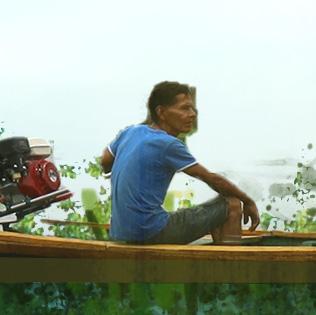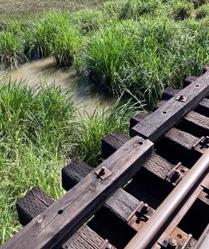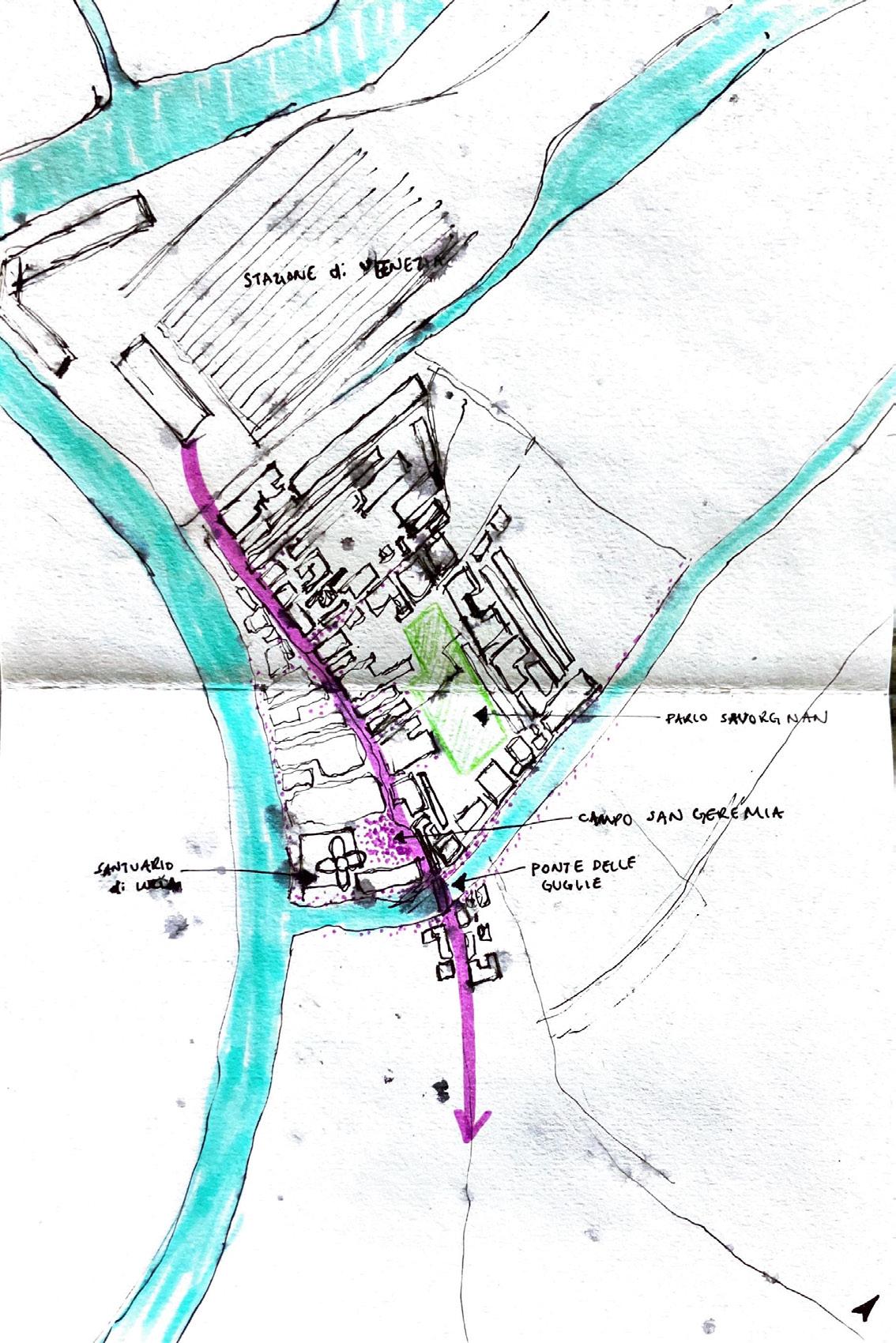

Tegan LochnerLandscape Architecture
Work Sample
Original Photography White Cliffs of Dover Dover, EnglandResume Sample
Education
The Pennsylvania State University | Aug 2020 - May 2024
University Park, Pennsylvania
Bachelor of Landscape Architecture
Experience
PASHEK + MTR Intern | July - Aug 2023
Pittsburgh, Pennsylvania
Living Habitats LLC Intern | May - Aug 2022
Chicago, Illinois
Research Assistant | Spring 2024 - present University Park, Pennsylvania
“Green Campus” study in collaboration with Penn State University, Texas A&M, the University of Texas at San Antonio, and Michigan State University
Teaching Assistant | Spring 2024 - present
University Park, Pennsylvania
TA for “Built Environment and Cultures: Exclusion and Justice in Urban Space”
Engagement
Penn State ASLA (Landscape Architecture Student Society) | 2020 - present President 2022 - 2023
Treasurer 2021 - 2022
Alumni Professional Group Student Representative | 2022 - 2023
Arts and Architecture Sustainability Council Undergraduate Representative | 2022 - present
VALLEY Magazine Graphic Designer | 2023 - present
Honors & Awards
Pennsylvania/Delaware ASLA Merit Award | 2024
College of Arts and Architecture Creative Achievement Award | 2024
Landscape Architecture Department Excellence Awards | 2021-2024
Student Leadership Planting Implementation Visual Communications
01 02 03 04
Camu-Camu Healthscapes
Improving health through unexpected interactions between people, place, and ecology in Iquitos, Peru
Superbloom
Establishing new planting palettes for the Millennium Science Complex
Stream Conditions
Mapping conditions along the Njokomoni stream outside of Udzungwa Mountains National Park in Tanzania.
Venezia Biennale Architettura
Exploring and documenting the Venice Architecture Biennale
Camu-Camu Healthscapes 01
Design Activism: One Health
Location: Iquitos, Peru
Duration: 14 weeks
Project Brief: In collaboration with the amphibious community of Claverito, I designed a sustainable agriculture scheme that encourages eco tourism and education. By examining the site at three different scales – the berry, the bosque, and the river – I aimed to improve the mental and physical health of residents of Claverito, increase biodiversity within Claverito to reduce vulnerability to disease and environmental disturbances, establish a self-sustaining economic system for residents to further expand, and create a framework that can be scaled up for other floodplain communities.





Legend

Existing Camu Camu Bosque

Proposed Expansion of Camu Camu Bosque
Floating Pathway Way-finding
Harvest for Food Harvest for Planting
Maintain Habitat
Bird Watching Tower
AERIAL VIEW OF CLAVERITO AND THE CAMU CAMU BOSQUE
Bosque expansion doubles the area of camu camu tress directly in the community. This subsequently doubles green space, habitat, and the amount of berries! Productive patches are rotated every year to ensure the bosque is not overharvested and can still provide its ecosystem services.









 Dense camu camu trees provide ample fish habitat.
Way-finding poles are tall enough to be used in the high river and low river seasons.
Boat tours through the community, bosque, and surrounding floodplain communities create a steady revenue stream for community members.
Amphibian fuliginosa Speckled Worm Lizard
Helicops angulatus Brown-banded water snake
Dendropsophus triangulum Triangle Treefrog
Dendropsophus haraldschultzi Many-lined Treefrog
Dendropsophus leali Plain-colored Treefrog
Coragyps atratus Black vulture Jacana jacana Wattled jacana Sternula superciliaris Yellow-billed tern
Psarocolius angustifrons Russet-backed oropendola
Dense camu camu trees provide ample fish habitat.
Way-finding poles are tall enough to be used in the high river and low river seasons.
Boat tours through the community, bosque, and surrounding floodplain communities create a steady revenue stream for community members.
Amphibian fuliginosa Speckled Worm Lizard
Helicops angulatus Brown-banded water snake
Dendropsophus triangulum Triangle Treefrog
Dendropsophus haraldschultzi Many-lined Treefrog
Dendropsophus leali Plain-colored Treefrog
Coragyps atratus Black vulture Jacana jacana Wattled jacana Sternula superciliaris Yellow-billed tern
Psarocolius angustifrons Russet-backed oropendola














 Community member expertly leading boat tours through the camu camu bosque. Tourist watching birds, awing at fauna, and absorbing the tropical atmosphere.
Community resident fishing to feed his family and sell in the local market down the road.
Child from the community exploring the edges of the camu camu bosque at sunset.
Low river season is prime for fishing
Bird-watching towers can be used in the high river and low river seasons.
Parts of the bosque completely dry out during the low river seasons. This allows people to run, walk, and relax amongst the trees.
Hemidactylus mabouia Tropical house gecko
Iguana iguana Green Iguana
Ascia monuste (Linnaeus, 1764) Great Southern White Butterfly
Eurema elathea (Cramer, 1777) Banded Yellow Butterfly
Canthon near subhyalinus Scarabaeinae Dung Beetle
Riodina lysippus (Linneaus, 1758) Neotropical Metalmark Butterfly
Prochilodus magdalenae Bouquichico
Trachinotus goodei Palometa
Cichla ocellaris Tucunaré
Community member expertly leading boat tours through the camu camu bosque. Tourist watching birds, awing at fauna, and absorbing the tropical atmosphere.
Community resident fishing to feed his family and sell in the local market down the road.
Child from the community exploring the edges of the camu camu bosque at sunset.
Low river season is prime for fishing
Bird-watching towers can be used in the high river and low river seasons.
Parts of the bosque completely dry out during the low river seasons. This allows people to run, walk, and relax amongst the trees.
Hemidactylus mabouia Tropical house gecko
Iguana iguana Green Iguana
Ascia monuste (Linnaeus, 1764) Great Southern White Butterfly
Eurema elathea (Cramer, 1777) Banded Yellow Butterfly
Canthon near subhyalinus Scarabaeinae Dung Beetle
Riodina lysippus (Linneaus, 1758) Neotropical Metalmark Butterfly
Prochilodus magdalenae Bouquichico
Trachinotus goodei Palometa
Cichla ocellaris Tucunaré

ANNUAL HARVEST FESTIVAL
Health Impact
Decrease water borne pathogens
• Floating plants absorb bacteria in the water, reducing E.coli and Cholera. Cholera levels in Claverito are at 7700 CFU/100 ml. This is over 6,000% more than recommended by the EPA.
Increase Biodiversity
• An expanded bosque doubles the habitat and resources available for animals allowing their populations to grow and thrive.
• Increased biodiversity acts as a buffer against disease, environmental disturbances, and climate change.
Increase Access to Food and Resources
• Creating a steady source of income will reduce anxiety
about obtaining food and feelings shame in the way the food is obtained.
Decrease Malnutrition
• Increased incomes can help community members buy food with higher nutritional quality in higher quantity.
• A surplus of camu camu berries ensures that everyone in the community has access to the berry’s high nutritional value.
Decrease Depression and Anxiety
• Hosting a vibrant festival during the peak of the high river season can change the feelings of isolation, depression, and negativity that persist around that time of year.
Estimated
120,000
 Lanterns shaped like the camu camu blossom will float throughout the community. Pink light will create visibility after sunset but does not attract disease ridden mosquitoes.
Luminescent paint will provide wayfinding in the dark.
People from all over Iquitos will come to Claverito to celebrate the bountiful harvest.
The festival will give community members a vibrant event to look forward to during the high river season.
Lanterns shaped like the camu camu blossom will float throughout the community. Pink light will create visibility after sunset but does not attract disease ridden mosquitoes.
Luminescent paint will provide wayfinding in the dark.
People from all over Iquitos will come to Claverito to celebrate the bountiful harvest.
The festival will give community members a vibrant event to look forward to during the high river season.







 A tourist getting a brief taste of life on the Amazon River.
Child in the community smiling alongside his family at the festival. Excited for the high river season.
Community member selling fresh camu camu juice from the plentiful harvest.
A tourist getting a brief taste of life on the Amazon River.
Child in the community smiling alongside his family at the festival. Excited for the high river season.
Community member selling fresh camu camu juice from the plentiful harvest.
Superbloom
Planting Methods and Implementation
Location: State College, Pennsylvania
Duration: 14 weeks
Project Brief: Superbloom is a planting masterplan for the Millenium Science Complex on Penn State’s campus. The new design transforms sprawling lawn into a quaint pollinator garden, two different tree plazas, and a vibrant micro-meadow.



















Stream
Conditions
Udzungwa Mountains National Park Ecological Monitoring Center
Location: Mang’ula A and Mang’ula B, Tanzania
Duration: 1 week
Project Brief: I collected soil samples along the Njokomni River in the area directly outside of Udzungwa Mountains National Park in the villages of Mang’ula A and Mang’ula B. During this process I also documented the character and conditions of the land adjacent to the stream using ArcGIS. This information was later used to inform the design of new riparian buffers.
Njokomoni River Context






















 Mang’ula A
Mang’ula B
Mang’ula A
Mang’ula B
Venezia Biennale
Architettura
Akademie für Internationale Bildung in collaboration with Nuertingen University
Location: Venice, Italy
Duration: 1 week
Project Brief: Inspired by the historic city of Venice and the innovative Biennale Architettura: The Laboratory of the Future, our group decided to redesign a park in the heart of Venice. Once a private garden for the adjacent villa, this park now serves as one of the only public green spaces on the island. At the Biennale we drew inspiration from the simplistic designs, intelligent material choices, and undulating scales of space. Tight surrounding alleys and a deteriorating wall ensure that this garden is kept secret from swarms of visiting tourists. Our design further enhances these two factors, ensuring that the park remains a respite for local Venetians.








PART I: Site Analysis of Giardini Savorgnan










PART II: Inspiration from the Biennale (Giardini)


PART II: Inspiration from the Biennale (Arsenale)




PART III: Conceptual Site Design





